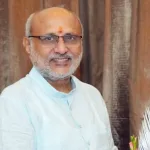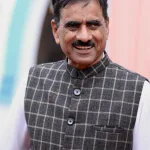India, a nation renowned for its cultural diversity and achievements since gaining independence, stands as a shining example on the global stage. When we delve into the heart of the matter, focusing on education, the cornerstone of a nation’s future, a compelling narrative of transformation emerges.
Imagine an era when education was a mechanical routine, confined to periodic assessments that fuelled unhealthy competitiveness among young minds. The traditional approach stifled the flames of creativity and holistic growth, leaving no room for a comprehensive personality development. But then, a beacon of change emerged – the National Curriculum Framework (NCF) of 2005 followed by National education Policy of 2020. It marked a seismic shift, steering institutions away from textbook-centric education towards a landscape that nurtured holistic development.
When a student queries a parent or a teacher about the purpose of their education, usually, the teacher or parent responds that the question will be asked on the test. This is how the traditional methods used in our educational system operate. The goal of education is enlightenment, not memorization for the sake of examination. In reality, no brain is exceptional. So how does Einstein perform miracles? He didn’t appear to enjoy anything else but solving problems. Einstein did not enjoy listening to lectures that consisted solely of repetitions of textbook content. There are numerous individuals who have changed the world, such as Einstein, by connecting academic research to the outside world.
In a land of around 1.4 billion people and nearly 1.5 million schools, we cannot afford to have gray areas in education. The need for quality education has been paramount. The NCF-2005, followed by NEP-2020, emerged as a beacon of change, steering the educational ship away from rote learning towards holistic development. But before this transformative shift, the educational landscape was marred by mechanical assessments and cutthroat competition that stifled creative brilliance and neglected personality growth. Enter the physicists who dared to envision a different future.
Daulat Singh Kothari: Architect of Innovation
One name echoes loudly in the annals of education reform – Daulat Singh Kothari. Hailing from the princely state of Udaipur, his journey epitomizes the transformational power of education. A physicist par excellence, Kothari’s journey from the University of Cambridge’s hallowed Cavendish Laboratory, mentored by none other than Ernest Rutherford, to becoming the scientific advisor to the Ministry of Defence, showcased a man of multifaceted brilliance. His journey, guided by luminaries like Meghnad Saha, transformed him into a luminary of physics and education. Dr. D S Kothari, a Padma Bhushan and Padma Vibhushan awardee, etched his mark as a pioneering physicist and the visionary behind India’s defence science architecture.
His contributions reverberate through the corridors of time. Architect of numerous DRDO labs including the Naval Dockyard Laboratory, Indian Naval Physical Laboratory, and the Solid State Physics Laboratory, he shaped India’s defense and scientific prowess. Instrumental in founding UGC and NCERT, he collaborated with Dr. P Blackett at the hallowed Cavendish Laboratory, where they laid the foundation for India’s defense and education systems.
Kothari’s chairmanship of the Indian Education Commission of 1964–66, fondly known as the Kothari Commission, stands as an enduring testament to his commitment to modernizing and standardizing India’s education system. His role in establishing various DRDO labs, UGC, and NCERT laid the foundation for a future that celebrated learning over mere examination.
Jayant Narlikar: Bridging the Cosmic and the Curricular
The cosmos and classrooms converged in the person of Jayant Narlikar. Together with Fred Hoyle, Narlikar conceived the Hoyle-Narlikar Theory, a cornerstone in gravitational studies. But his impact stretched beyond astrophysics. As the Chairperson of the Advisory Group for Textbooks in Science and Mathematics, part of the NCERT, Narlikar championed a curriculum that connected students with the marvels of science. His journey from the Banaras Hindu University to the University of Cambridge, paralleling India’s educational evolution, exemplified his commitment to intertwining scientific progress with educational advancement. Narlikar’s hand guided the development of knowledge-bearing tomes that ignite young minds. His Padma Bhushan and Padma Vibhushan accolades bear testament to his influence.
Yash Pal: A Luminary’s Trail of Transformation
Professor Yash Pal’s journey weaves through seismic shifts in India’s educational panorama. From his involvement in the path breaking Hoshangabad Science Teaching Programme to chairing the National Advisory Committee on overburdening school children, Pal’s contributions were pivotal. Chairing the National Advisory Committee and the Committee on Higher Education, he reshaped the contours of learning. His guidance in drafting the National Curriculum Framework of 2005, following the “Learning Without Burden” report, exemplified his commitment to alleviating the weight of education. A visionary whose administrative roles stretched from UGC to the UN, Pal exemplified the harmony between visionary education policies and scientific advancement. An alumnus of Lahore and Panjab Universities, his relentless spirit overcame partition’s disruptions. From the Tata Institute of Fundamental Research to the exalted halls of the University Grants Commission, Yash Pal’s trail blazed through institutions, radiating transformation.
Professor Yash Pal, a disciple of Professor Daulat Singh Kothari, gained widespread recognition for popularizing science among children, notably through his TV show “Tuning Point,” where he adeptly simplified intricate scientific concepts, earning immense popularity as an engaging educator. With a unique talent for simplifying complex ideas, he transformed the University Education Commission’s vision into reality by establishing advanced shared research facilities for university instructors. During his tenure as UGC chairman, he founded the Inter-University Centre for Astronomy and Astrophysics, the Consortium for Educational Communication, the Inter-University consortium for Department of Atomic Energy facilities, and INFLIBNET. His penchant for simplicity, dedication to education, and innovative suggestions, such as reducing school bag burdens or learning without burden and promoting interactive learning over rote memorization, remain pertinent, underscoring his unassuming and resilient personality.
Krishnaswamy Kasturirangan: From Space to Syllabi
Krishnaswamy Kasturirangan’s journey transcended the boundaries of the atmosphere. His stewardship of Indian Space Research Organization (ISRO), overseeing the launch of satellites and celestial exploration, established India’s space prowess. With over 240 scientific publications under his belt, Kasturirangan exemplifies how scientific curiosity can ignite educational revolutions. However, his journey took an intriguing turn as he embarked on sculpting India’s educational destiny. Leading the National Education Policy 2020 and heading the steering committee for a new National Curriculum Framework, Kasturirangan proved that his vision extended from celestial bodies to the minds of the nation.
Dr.Krishnaswamy Kasturirangan, at the helm of the drafting committee, has played a pivotal role in reshaping India’s education policy, marking a significant overhaul after three decades. The policy, co-crafted by his team, introduces transformative changes such as the 5+3+3+4 structure, adaptable assessments, and early-stage vocational training. The team also felt that the various aspects and stages in a child’s education must be interconnected, like school to college to university education Emphasizing the importance of diverse education, Kasturirangan envisions an interconnected educational journey, advocating against compartmentalization for a more comprehensive and flexible learning experience, where the rigidity of the past no longer holds.
The symphony of these physicists’ contributions to education underscores how knowledge forged in the crucible of scientific inquiry can shape the destiny of a nation. Their stories are not just tales of scientific discovery; they are sagas of how individuals, armed with scientific insights, can ignite educational revolutions that transcend generations. Honoured with doctorates from 27 universities, his legacy shines bright.
Elevation through Education: An Ode to Physics Visionaries
From Daulat Singh Kothari’s scientific prowess shaping defense to Jayant Narlikar’s cosmic insights lighting the curriculum, Yash Pal’s transformative leadership, and Krishna swamy Kasturirangan’s dual mastery, these physicists’ footprints echo in the classrooms of today and the progress of tomorrow. Their legacy isn’t just in textbooks but in the boundless potential they’ve ignited, a tribute to their relentless pursuit of excellence. As India’s educational tapestry transforms, these physicists stand as the architects of a brighter future, where minds are nurtured, innovation thrives, and the nation soars to new heights.
(The Author is Sr. Academic officer (Physics), Department of Education in Science & Mathematics, State Council of Educational Research Training (SCERT), Bemina, Srinagar, J&K-190010. E-mail: [email protected])





